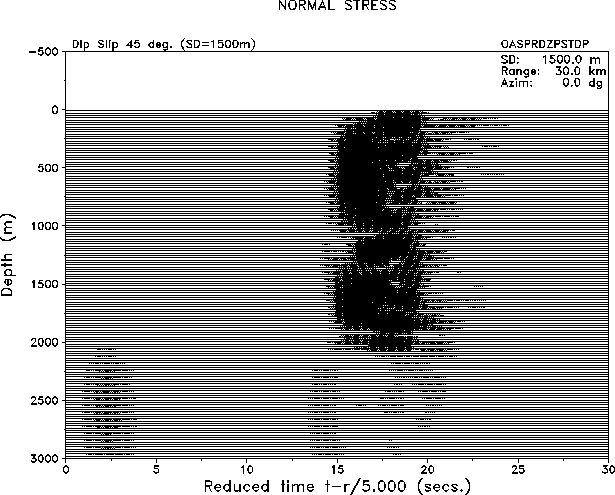RD-OASES:
OASES Range-dependent TL Module

RDOAST is a new range-dependent version of OASES. RDOAST uses a "Virtual Source Algorithm" (VISA) for coupling the field between range-independent sectors. VISA provides an approximate, single-scatter, local plane wave handling of vertical discontinuities. In contrast to the elastic PE, VISA incorporates wave type coupling at vertical interfaces, and it is therefore applicable to high contrast seismo-acoustic propagation problems, and not only to the weak contrast problems handled by the PE. The solutions provided by RDOAST for weak contrast probles agree very well with those provided by the elastic PE.
Obviously, RDOAST has been validated by comparison to reference solutions such as the classical Kuperman-Jensen Wedge problem:

The performance of VISA and RDOAST to a wide range of seismo-acoustic
benchmark problems with weak and strong contrast discontinuities
is described in:
- J.T. Goh and H. Schmidt, A hybrid coupled wave-number integration approach to range-dependent seismo-acoustic modeling, J. Acoust. Soc. Am., 100:1409-1420, 1996.
Current RD-OASES Application
Modeling generation of T-phases from earthquakes.

Range-Dependent Seismo-Acoustic Benchmarks
A number of benchmark problems for two-way, range-dependent seismo-acoustic propagation models have been developed in connection with the development of RD-OASES. They are described in the publications:- J.T. Goh and H. Schmidt, A hybrid coupled wave-number integration approach to range-dependent seismo-acoustic modeling, J. Acoust. Soc. Am., 100:1409--1420, 1996.
- J.T. Goh, H. Schmidt, P. Gerstoft and W. Seong Benchmarks for validating range-dependent seismo-acoustic propagation codes, IEEE J. Oceanic Eng. , In Press, April 1997.
New RD-OASES Pulse version RDOASP

This version computes multi-frequency transfer functions similarly to OASP, but for laterally inhomogeneous stratifications. Click on Fault VSP to see an MPEG animation of the field produced by an explosive source in a fluid-filled borehole in a stratification with a faulted low-velocity layer. This is the problem treated by FD in Kurkjian etal., Geophysics, 59: 1053-1064 (1994). Compare to their results in Fig. 12.